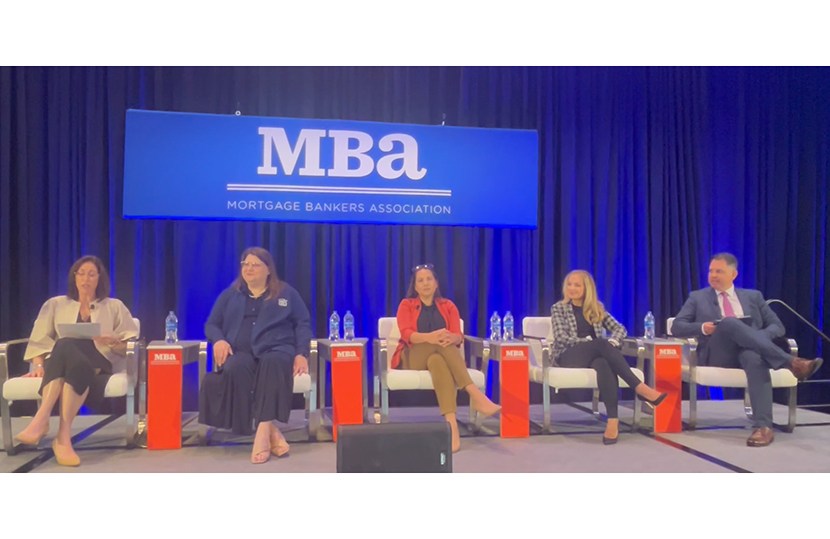
State Regulatory Landscape Sees Collaboration, Challenges, Panel Says

(From left to right: Nanci Weissgold, Kristen Anderson, Kat Hyland, Michelle Rogers and Tony Vasile)
WASHINGTON–Under the second Trump administration, the federal regulatory scene has clearly changed. With that in mind, everyone is “keenly interested” in what’s happening in individual states, said Nanci Weissgold, 2025-2026 MORPAC Chair and Co-Chair of the Financial Services Group, Alston & Bird, at MBA’s Compliance and Risk Management Conference Sept. 29.
One relevant arena is nonbank supervision–including multi-state coordination. Tony Vasile, SVP of nonbank supervision and enforcement for the Conference of State Bank Supervisors, highlighted recent efforts on that front.
Among those is building common standard examination programs for the states to use; over the past few years, states have been working on aligning information and data requests under the philosophy of “one company, one exam.” He noted this type of collaboration also helps states become more familiar with each other’s work.
Kristen Anderson, deputy administrator of financial regulation at the Oregon Department of Consumer and Business Services, described how when she began in the industry, there “was no such thing as working with your fellow states,” but over the years, trust and collaboration has become more salient.
Given uncertainties with federal regulatory enforcement, there are further benefits to this state collaboration there, too. “What I can do is rely on this network of supervision of all the states where we work together and we take our resources and we amplify them by using them in the most efficient way,” Anderson noted.
In terms of how enforcement looks in this era, it varies based on the state and issue identified, the panel stated. Kat Hyland, deputy commissioner of financial regulation, Maryland Department of Labor, weighed in, describing how when her office discovers something in the course of an exam, “the first thing we do is contact the business directly and try to work with the company to fix whatever the enforcement finding is.”
She described how the agency looks at factors like how many consumers are affected and what the willingness to resolve the issue is. “When there is an unwillingness to fix a larger problem […] then that might rise to the level of a conversation with the [Multistate Mortgage Committee]. And if other states are seeing that trend, then we’re not going to duplicate efforts to ask the same business the same questions over and over again,” Hyland said.
In terms of tips for dealing with state regulators, Anderson recommended that companies “be responsive.”
“Don’t play hide the ball. When we ask you a question, we probably already know what the answer is. We just want to see what you say,” she said. “Hand us the documents we ask for. We’re asking for them for a reason.”
However, there still are some pain points in dealing with state regulation, said Michelle Rogers, global chair of financial services with Cooley.
For example, there are certain protections related to privilege and disclosures at the federal level that largely don’t exist at the state level. “If I’m going to create a safety and soundness risk, which should also be a consideration of the state, by disclosing information that then becomes waivable in all of these class actions and puts me at risk, I can’t do that,” Rogers provided.
But, there’s optimism for collaboration and problem-solving on such issues moving forward, too.
“That’s the value of all of this, is that conversation that goes on because we don’t have divided opinions here,” Anderson said. “I don’t think the regulators want you to be violating your privilege and opening yourself up to more risk, because that doesn’t help you be safe and sound, which we all want. So, it highlights that there’s an issue here that we need to address.”
